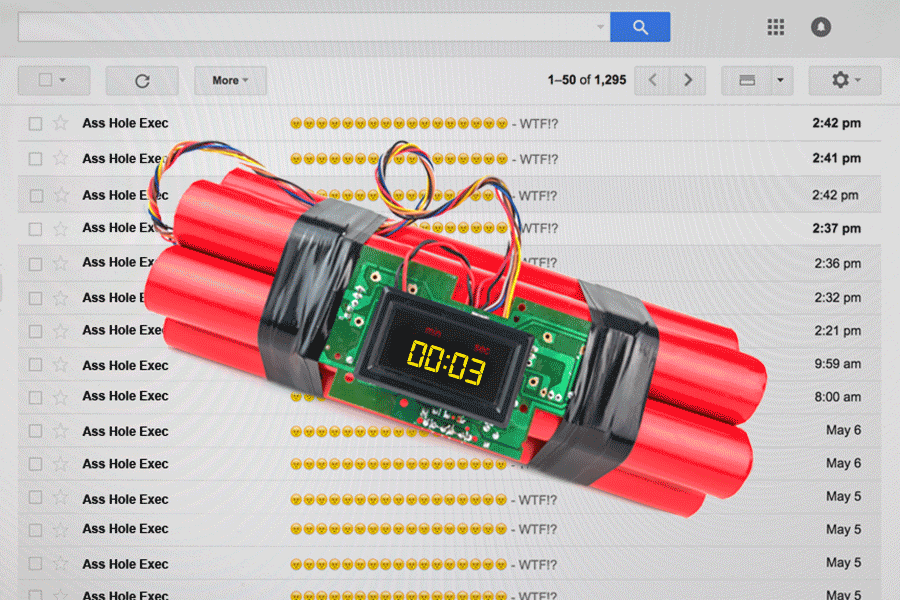These days, instead of logging 30 hours on the phone to lodge a customer complaint only to get bumped through rungs of automated service and eventually — if you’re lucky — reach a low-level worker who probably can’t help you, you’re probably more inclined to take your complaints to social media. Twitter and Facebook now rank as highly effective ways to publicly shame a corporation into addressing your misery. But a consumer advocate insists emailing executives at the company in question might still be the most effective way to get shit done.
Writing at The New York Times, money columnist Ron Lieber dusts off an old technique known as the EECB—short for executive email carpet bomb — as the go-to method for getting complaint resolution handled immediately. Lieber claims the method has “never failed” him.
Here’s how it works: You find the email addresses of a targeted group of corporate executives at the place that burned you, and send the strongly worded complaint letter of your dreams. It must be “pointed but polite,” Lieber writes — “perhaps even warm and funny,” a former senior editor, Meg Marco, from the site Consumerist, who coined the phrase 10 years ago, also advised. Lieber writes:
Keep it short. State the problem quickly. Make a reasonable ask. Don’t threaten to bomb the factory, which an old friend of mine did when two lamps that he had purchased failed in rapid succession. (The stern letter he received in return went up on a dorm room wall.) And try to avoid being one of the crazy-sounding people companies never want to hear from. “Don’t send a rant,” Ms. Marco said.
Consumerist devised a template you can use, and Lieber offers his own successful example. Lieber goes onto explain that you’ll want to scour the company’s site for the executives who are most likely to be able to help you — anyone on the senior executive team is a good place to start, but not a P.R. person, whose job is not to deal with you, riffraff member of the public.
So why might this seemingly antiquated complaint letter work in an age where social media has become the most popular route for complaint resolution, given the visibility and high potential for “viral scorn” these channels offer?
Lieber asked one executive who answered an EECB, Mike Withers at Albertson’s, if he had any idea why. “If they sent it to me, I assume that they want to hear from me,” Withers told him.
It may simply be that such executives aren’t used to receiving such complaints, so they take seriously anyone who did the legwork to track them down. More likely it’s because such executives understand that, according to complaints research, every unhappy customer will tell 10 people about that experience, and those people will tell five more people, meaning every one person can spread the word to 50 others. By that math, such research posits, if only one out of every 10 unhappy customers actually takes the time to complain, this means that every formal complaint a company receives actually represents 500 miserable people who don’t want to use the product or service anymore. Yikes.
Lieber notes that the EECB should be a last resort, and guides to social media complaining also recommend using the tactic judiciously for better results. But it’s nice to know there’s still another option—literally anything other wasting precious hours of your afternoon on the phone with Comcast trying to get your bill fixed.
[Editor’s note: It worked for me.]

